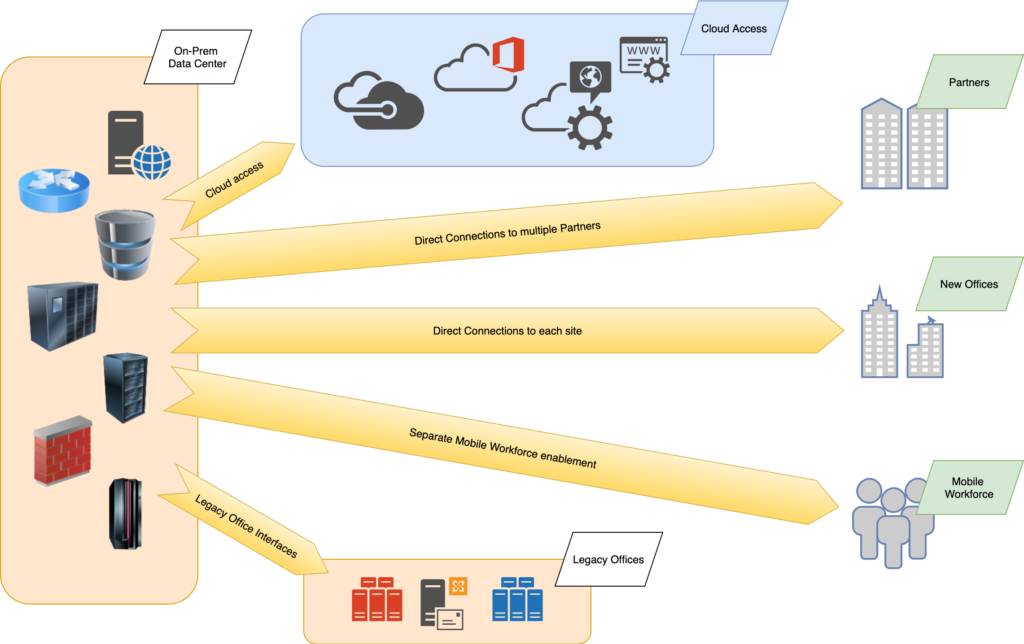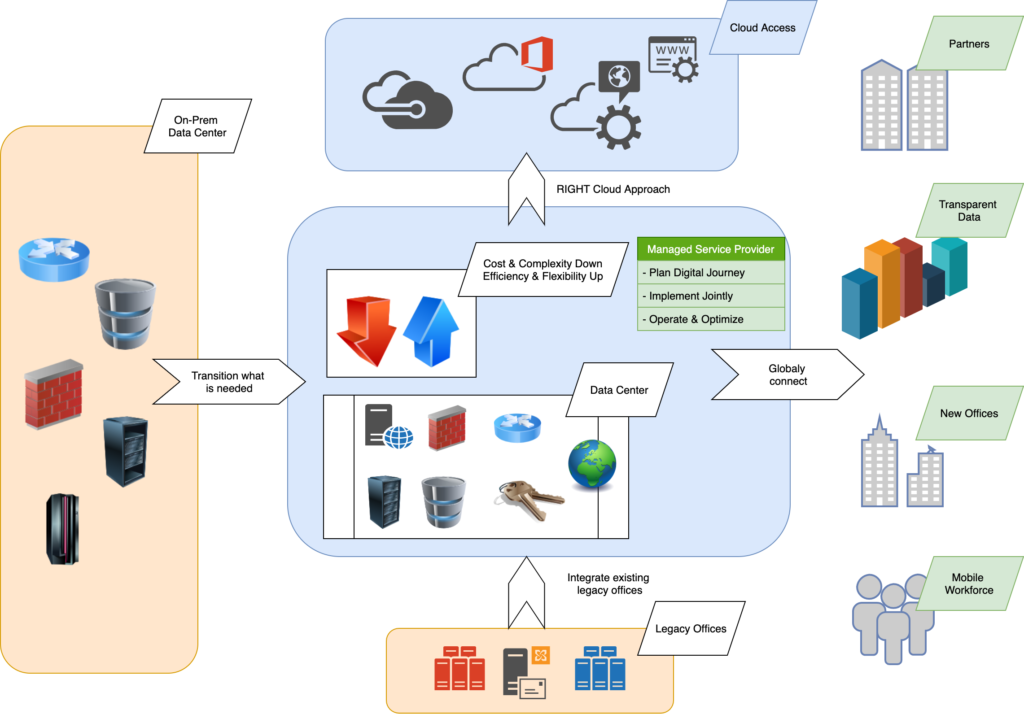In the manufacturing sector, we very often find medium-sized companies that are set up like a multi-national large corporation due to their business requirements. These companies produce at different locations around the world and communicate globally with partners as well as with their own organisation. The business processes are just as international as the delivery and performance requirements. These medium-sized manufacturing companies have to master similar challenges, but can usually spend a much smaller budget on this. The requirements for a digital transformation are therefore often all the more important in order to remain competitive.
There are many reasons that can prevent a company from keeping up with rapidly changing market demands. The simple-sounding approach of moving everything to the cloud does not support the actual business model, nor is it possible with all the historical elements that make up your current IT architecture and application landscape.
In addition to the burden of keeping up with ever-changing markets on a daily basis, local data protection regulations and compliance requirements cannot be overlooked. These add to the complexity.
Production often takes place in different places around the world. In order to bring goods to market, you should have local partners in the respective country or open your own office abroad or at least map an online presence.
Data is not only produced in the production facilities but more importantly in your offices around the world as well as with your partners who work with you and collect important market information.
All this forces you to manage distributed data pools in many locations. Nevertheless, you want to be able to analyze and control the data centrally.
Connecting partner organizations to your business and sharing internal information with them requires trusted connection points. Different data security regulations come into play and the storage of data must comply with local laws.
Challenges
– Systems collected and developed over years cannot simply be replaced
– Markets change quickly and require IT to adapt and scale up
– Bringing in new partners or external resources is difficult
– Applications are slow and not cloud-ready
– Hardware is outdated and new investment is required for replacement
– Space available in own data centre prevents scalability
Current status of operations
To be prepared for the future, you need to know exactly where you stand today. Very often, the existing IT architecture and processes in the company have grown historically. It is important to understand how the current data streams are routed and how access rights are set and maintained.
Another dimension is the applications currently in use. Some of them may not be cloud-enabled. If you are lucky, you now have the chance to replace these applications with new cloud-enabled software. Sometimes there are good reasons not to change the application and you have to accept the fact that these applications will remain as they are. This does not mean that they cannot be transferred to a new infrastructure, but this needs to be assessed in detail.
Future IT architecture
To prepare for the necessary steps into the future way of working, several options present themselves. The mantra of the big cloud providers to pursue a cloud-first or even a pure cloud strategy should not stop you from thinking about the “RIGHT” way for you and your company. Determine for yourself the cloud approach that suits you.
As we touched on above, there are applications that cannot be moved to the Cloud. Sometimes even virtualization is not possible. There may be very good reasons why you need to keep some data strictly local, to comply with data security regulations such as GDPR, or simply because you want to.
The good thing is that with a modern IT architecture, almost anything is possible. If you do it right from the start, you can determine and control every single step of your “Digital Transformation” yourself, rather than being controlled by your project.
Building a solid hybrid solution with IT infrastructure and computing power on your own premises, in a dedicated data centre and with one or more cloud providers allows you to grow at your own pace. What you build today may need to be changed tomorrow, but it shouldn’t stop you from taking the first path.
Future ways of working
New technologies always open up new ways of working and different approaches to create a solid solution. On the other hand, they can also become very complex and require skilled people who are familiar with the latest technology.
Working with a partner who has such a high level of expertise and understands the importance of such changes to your business is the best way forward.
There is still plenty for you and your IT experts to do. You need to rethink your business processes and select and implement new applications and data processes to get the best out of your organisation. IT operations may not be the part that adds the most value to your business.
At weSystems, we want to work with you on a partnership level. We have people who understand how to develop hybrid solutions to realise the future of your IT architecture with you.





